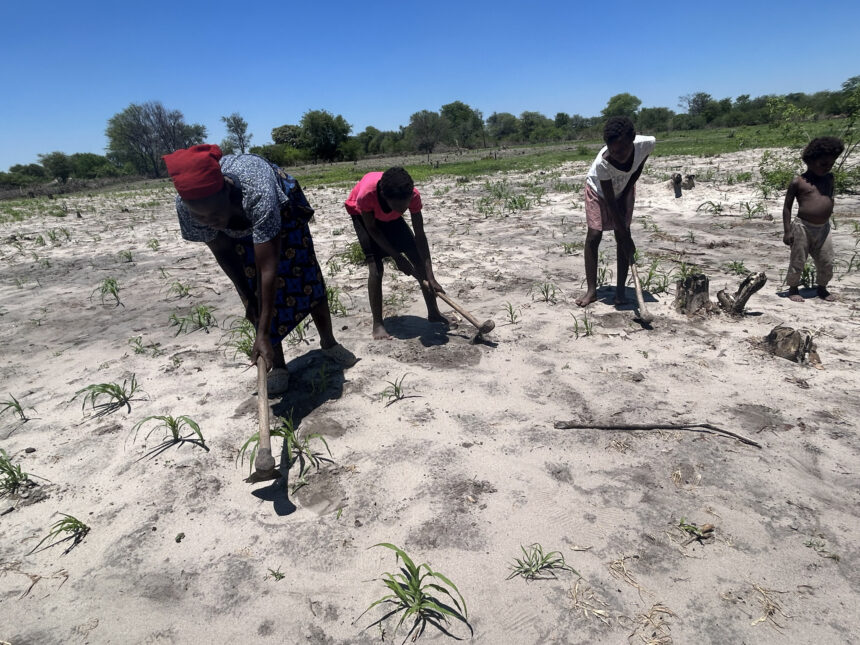SIBBINDA – Subsistence farmers in the Zambezi region who have started cultivating their fields have opted to plant drought-resistant crops such as millet (mahangu) and sorghum.
Over the years, farmers in the region have largely been growing maize. However, due to the persistent drought situation, farmers are now shifting to growing crops that are drought-resistant such as cassava, mahangu and millet, instead of maize, which requires a lot of water.
One such farmer is 40-year-old Heritha Mafenjeho from Nampengu village in the Sibbinda constituency.
In the heart of a small rural community, she is demonstrating unyielding resilience as she works tirelessly to cultivate her six-hectare field. Unable to afford oxen or a tractor for ploughing, Mafenjeho and her children rise at dawn, armed with nothing but hoes, and an unwavering determination to make the most of the planting season. Her crop of choice is mahangu, a staple grain known for its drought-resistance. Limited by her financial circumstances, she opted for mahangu seeds instead of maize, as she could not afford the latter. However, she remains optimistic, stating, “If we receive good rain, there will be a bumper harvest.”
In addition to mahangu, she has planted watermelons to diversify her crops. Every day, she and her children prepare lunch in the field, making the long hours of labour more manageable.
Mafenjeho’s efforts reflect the broader challenges faced by subsistence farmers in Namibia, where changing rainfall patterns and economic constraints have made agriculture increasingly difficult. Confirming the start of the ploughing season, Sibbinda councillor Micky Lukaezi emphasised the importance of strategic planning. “Rainfall patterns are not as predictable as they used to be,” he warned. “The dry spell is a concern, and farmers must adapt to these conditions,” he said. The councillor advised farmers to plan their planting to minimise risks. “Planting everything in one day is high-risk, especially with potential dry spells. Diversify your crops, and spread out your planting to ensure better chances of success,” he urged. Despite these challenges, Mafenjeho’s determination embodies the spirit of many Namibian farmers who continue to work their land with limited resources. The councillor encouraged such perseverance, saying, “Farmers should not give up. Use whatever tools you have, even if it’s just hoes. The key is to make the best of what you have at your disposal.”
Mafenjeho’s story is one of resilience and hope, a testament to the enduring strength of Namibian farmers who, despite the odds, continue to cultivate the land that sustains their families and communities.


